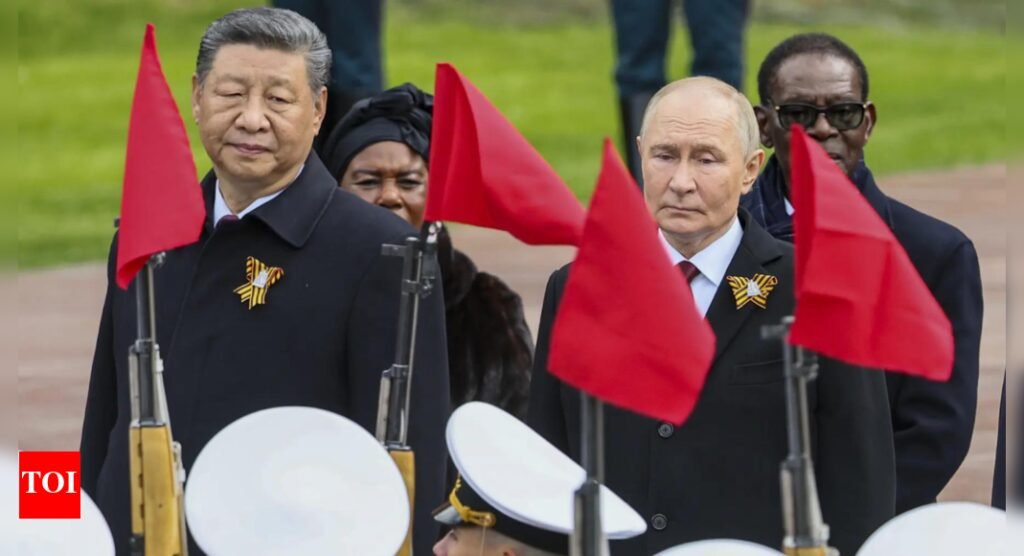Last week President Trump finally had the phone call with Xi Jinping that he was reportedly “obsessed” with arranging.
This followed a week of Trump suggesting he would blow up the crucial relationship with China that was only recently steadied after an alarming month of spiraling economic warfare. That began when, without advance warning, Trump posted that China “HAS TOTALLY VIOLATED ITS AGREEMENT WITH US.” Then at 2am the day before the call, he wrote that Xi is “VERY TOUGH, AND EXTREMELY HARD TO MAKE A DEAL WITH!!!”
Trump’s readout of his call with Xi was very optimistic, suggesting progress resolving recent disputes and promising another meeting of trade negotiators on both sides as well as a future trip to China. The Chinese readout, in contrast, indicated that the basic impasse in trade talks was unresolved, but also spoke encouragingly about reviving talks.
What to make of this commotion? Are we on the verge of a diplomatic breakthrough or on the brink of the runaway great power crisis that seemed almost inevitable a few weeks ago? As so often with Trump, either of both extremes is a real possibility.
Trump is more open to genuine dealmaking with China than Biden and has shown himself willing to back down when necessary. The Chinese behavior that Trump is denouncing seems to be a response to discrete U.S. actions that could be reversed. The rapid accumulation of aggressive anti-China measures in recent weeks might be driven more by Trump’s search for leverage in negotiations than an unalterable commitment to confrontation.
Yet the world’s two most powerful countries are playing with fire. Almost a decade of intense mutual antagonism has significantly exacerbated the zero-sum global pressures that fractured the relationship in the first place. Both sides have assiduously built the institutional and ideological infrastructure to sustain great power violence.
The key question is whether Trump can pivot away from his domineering negotiating style and either pursue the substantive possibilities that China has already suggested or offer a different agenda. If not, the multiplying flashpoints in both economic and military realms might soon send the U.S. and China over the brink.
In April, Trump risked such a permanent rupture with China when he transformed his “liberation day” trade war against the whole world into a tariff assault focused on China. With tariff rates on both sides soaring past 100 percent, economic relations between the world’s two largest economies were effectively severed overnight. The Trump administration’s aim of imposing exclusionary measures against China on third countries dramatically compounded the sense of siege on the Chinese side.
Weeks of bickering followed, in which Trump repeatedly insisted that Xi wanted to de-escalate but would have to call him first. He intimated that China had already reached out at lower levels, but China consistently replied that no such communications were underway. World financial markets reeled, and global trade flows were thrown into disarray.
Despite the truculent personalities on both sides, the two countries somehow found their way to a graceful exit from this impasse. On May 12, Treasury Secretary Scott Bessent and Trade Representative Jamieson Greer met with Xi’s top economic official He Lifeng in Geneva for extended discussions. Their breakthrough agreement went further than observers had expected, temporarily reversing the tariff onslaught and restoring the situation prior to liberation day except for an added 10 percent rate on both sides. Notably, that 10 percent increase is in line with Trump’s minimum increase on all countries, so it does not single out China.
The agreement included two crucial additional provisions. The United States agreed to a structure for negotiations, which China had been seeking for months. China agreed to allow exports of rare earth elements it had blocked in its retaliatory measures, alarming top U.S. officials.
The surprise truce of May 12 seemed to create a path to lowering tensions and perhaps even to a meaningful diplomatic agreement. May 13 derailed those hopes.
That day, Trump’s Commerce Department issued new guidance, warning that anyone using Huawei-designed advanced semiconductors anywhere was likely in violation of U.S. export controls and thereby risking “substantial criminal and administrative penalties, up to and including imprisonment, fines, loss of export privileges, or other restrictions.”
This guidance makes use of the Biden administration’s blockade on advanced computing technology, but creatively turns export restrictions into an offensive weapon in the arsenal of economic warfare. Seeking to sow panic in Huawei customers in order to strangle demand for the company’s products, it builds on previous measures under Trump 1 and Biden aimed at felling China’s most successful multinational company.
Commerce has issued a host of additional new restrictions on China’s access to technology since Trump’s inauguration, including a significant expansion of Chinese companies restricted by the department’s Entity List, a cutoff of previously permitted computer chips used in China’s AI sector, and bans on the sale of products and technology used by China’s aircraft and computer chip companies.
Such measures represent continuity with the Biden administration’s progressively expanding campaign to keep China in a position of permanent technological subordination. But the Trump administration is also opening new fronts against China. Most prominently, Secretary of State Marco Rubio announced last week that the administration will “aggressively revoke visas for Chinese students,” embracing the conspiracy theory that Chinese people are a national security threat by virtue of their nationality.
How should we interpret these moves? On the one hand, the possibility of the Trump administration breaking permanently with China is all too real. Vilification of China provides common ground in an otherwise fractious Republican Party and specifically among the key personnel in the Trump administration. Whatever their motivating aim — be it domestic reindustrialization, reducing the trade deficit, establishing “independent” supply chains, preserving corporate profits, damaging elite universities, dominating the Western Hemisphere, focusing American geopolitical power on Asia, or seeking “social solidarity” by driving foreign elements out of the U.S. — China exclusion is an organizing principle and policy goal.
On the other hand, one of Trump’s most consistent patterns is to pile on negotiating pressure by attacking his counterpart’s most sensitive concerns. He has shown himself willing to reverse course on such measures — even when his advisers might argue for more confrontation — in order to strike a bargain. And there is some reason to interpret recent anti-China moves in this light.
For example, the Commerce Department’s plan to ban Nvidia’s H20 chip was reportedly put on hold after company CEO Jensen Huang paid $1 million to attend a dinner with Trump. On the day Trump postponed liberation day and directed all his aggression against China, Nvidia was informed that the ban would go forward after all.
Likewise, the plan to expel Chinese students was announced hastily, apparently without any operational preparation — just as Trump’s frustrations about rare earths and Xi’s failure to call him were reaching the breaking point. In his call with Xi and in subsequent comments, Trump spoke positively about Chinese students in the U.S.
Now that China has discovered what a potent source of leverage its rare earths restrictions are, it is unlikely to cede the issue unless Trump reins in his Commerce Department’s aggressive moves. Yet even if the U.S. makes such a concession, other threats to diplomacy loom over the relationship. U.S. moves to cut China off from its economic partners and the Pentagon’s confrontational posture in Asia are particularly ominous.
Coupled with Trump’s predilection for using negotiations to display his own dominance — guaranteed to drive China away — the conditions for stable great power relations are dark. But if Trump were to insist that his hawkish advisers direct their energies into driving a hard bargain rather than driving the two countries toward open conflict, the U.S. and China might yet move off the path of mutually destructive hostility.







